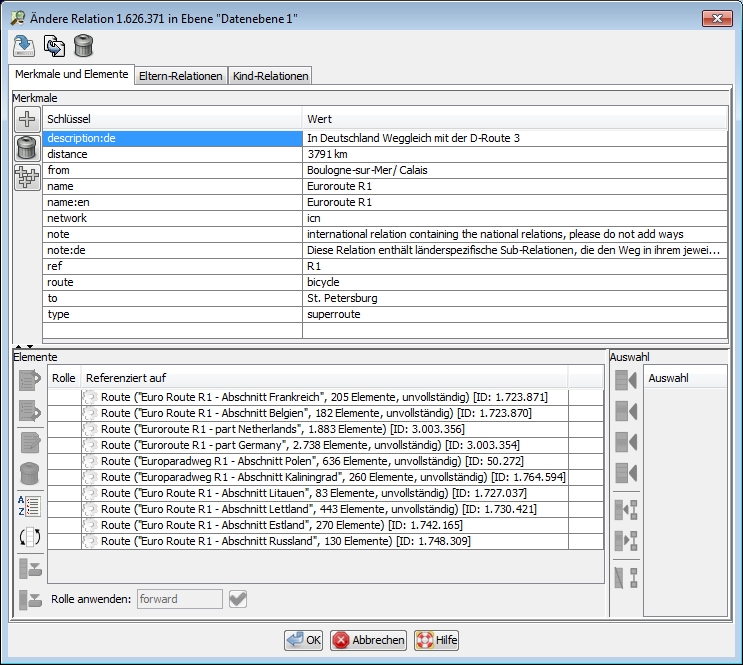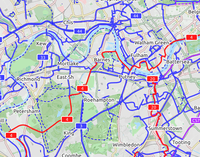Relation:superroute
| Description |
|---|
| Used to group multiple continuous routes into a parent relation. |
| Group: routes |
| Members |
| Status: in use |
| Tools for this tag |
|
Common practice is to create routes with no more than about 300 elements. But this is often the case with long routes. The routes are divided, e.g. at political borders and the individual sections may be summarized in a superroute. Another common use case are hiking relations which are divided into stages, here the superroute relation combines the stages (route relations) into a relation for the whole route.
Alternatives
The older and simpler approach, however, is to tag the superrelation as a type=route containing the shorter type=route relations recursively with appropriate role=*. This is typical when mapping routes by direction in countries where route directions are signposted. As of October 2023, there are 38,647 relations nested inside route relations, as opposed to only 19,509 relations nested inside superroute relations.
How to map
The tag list for superroute is the same as for routes, regarding route=*, ref=*, network=*, name=*, … The values of the superroute are not necessarily the same as for the member routes. E.g. a European cycling superroute will be tagged network=icn, while its members are usually network=ncn routes or superroutes.
Example
Internationale Euroroute R1
The routes are divided at the national boundaries.

See also
- Super-relation - a relation that contains other relations
- Relation:route_master
- stage=* for individual stages of longer routes
